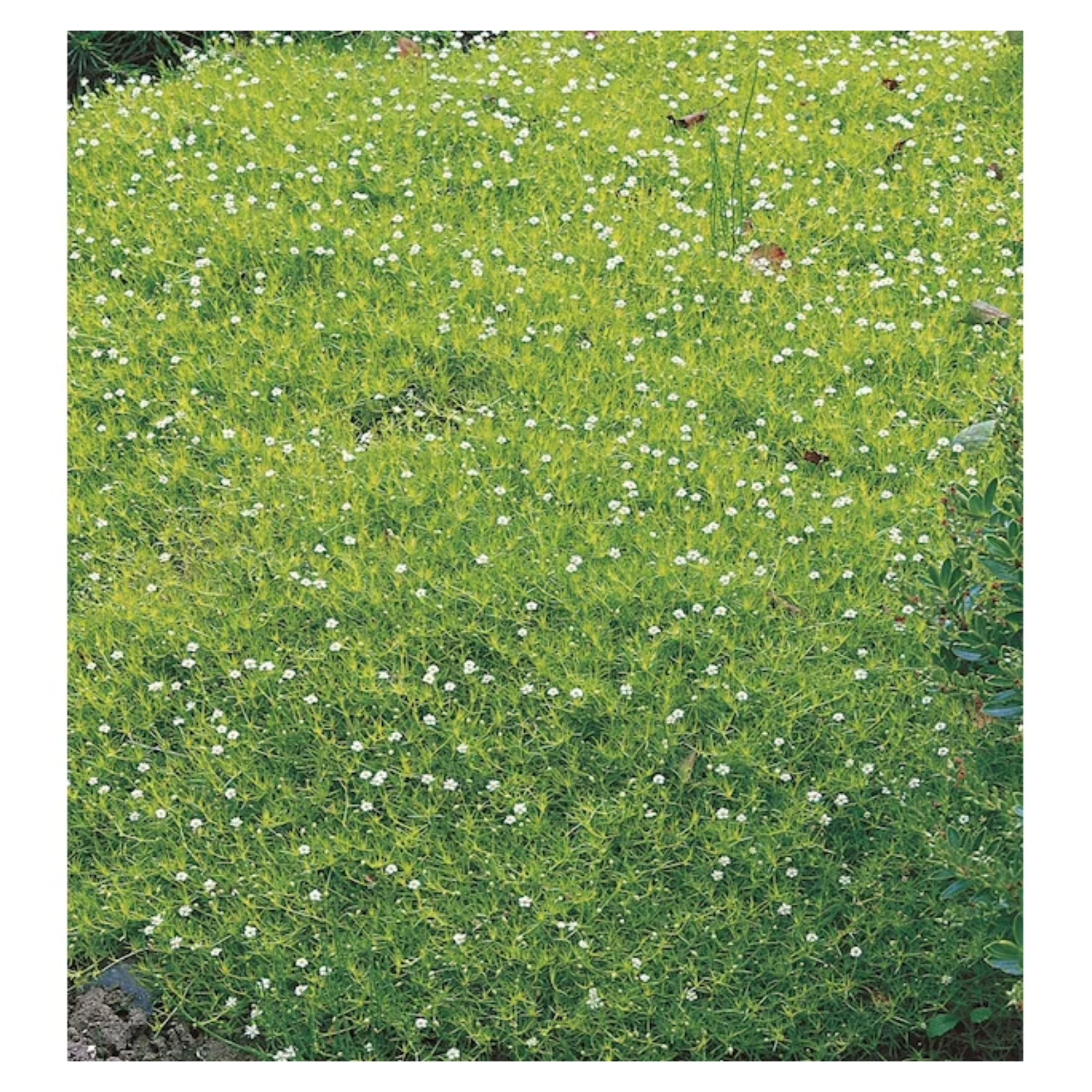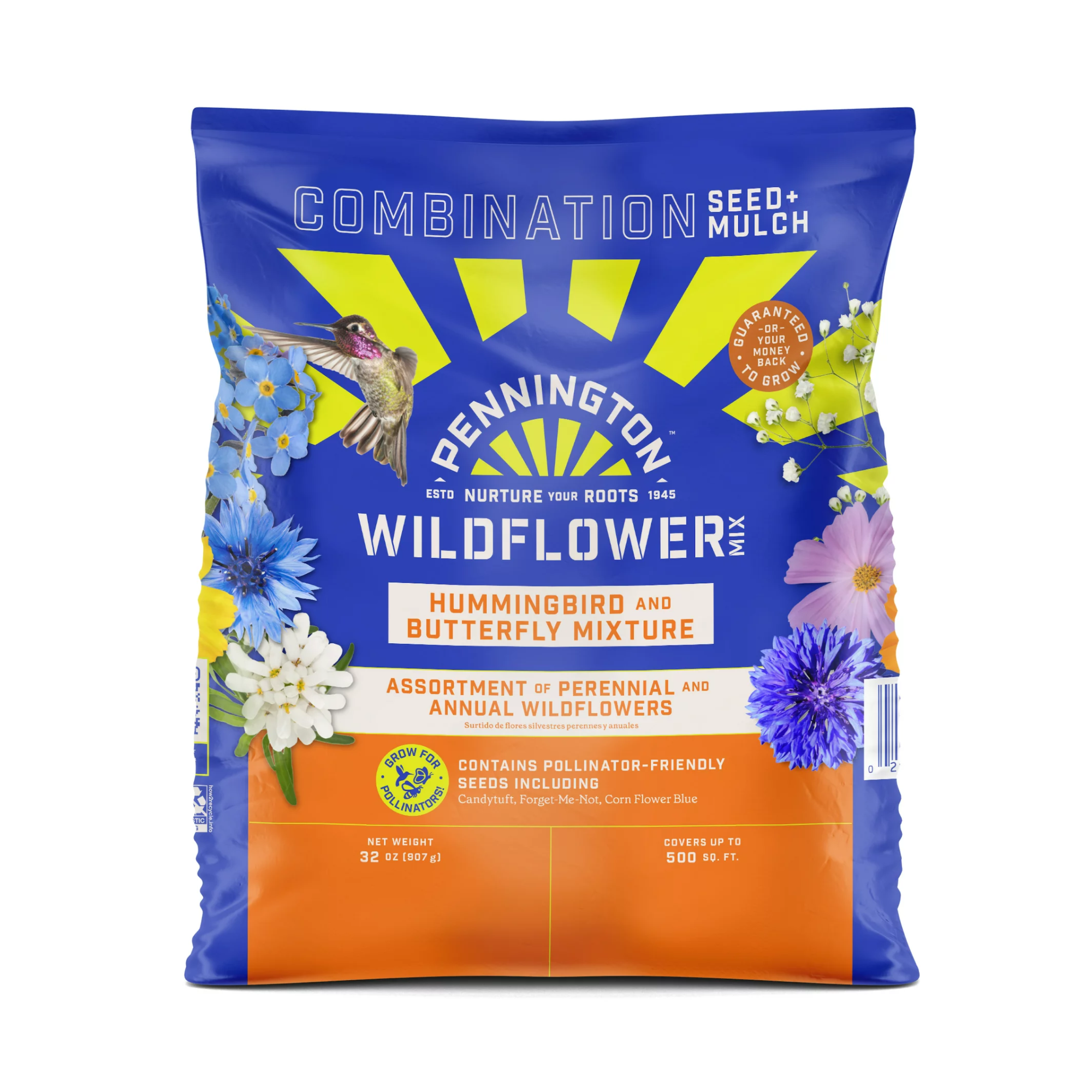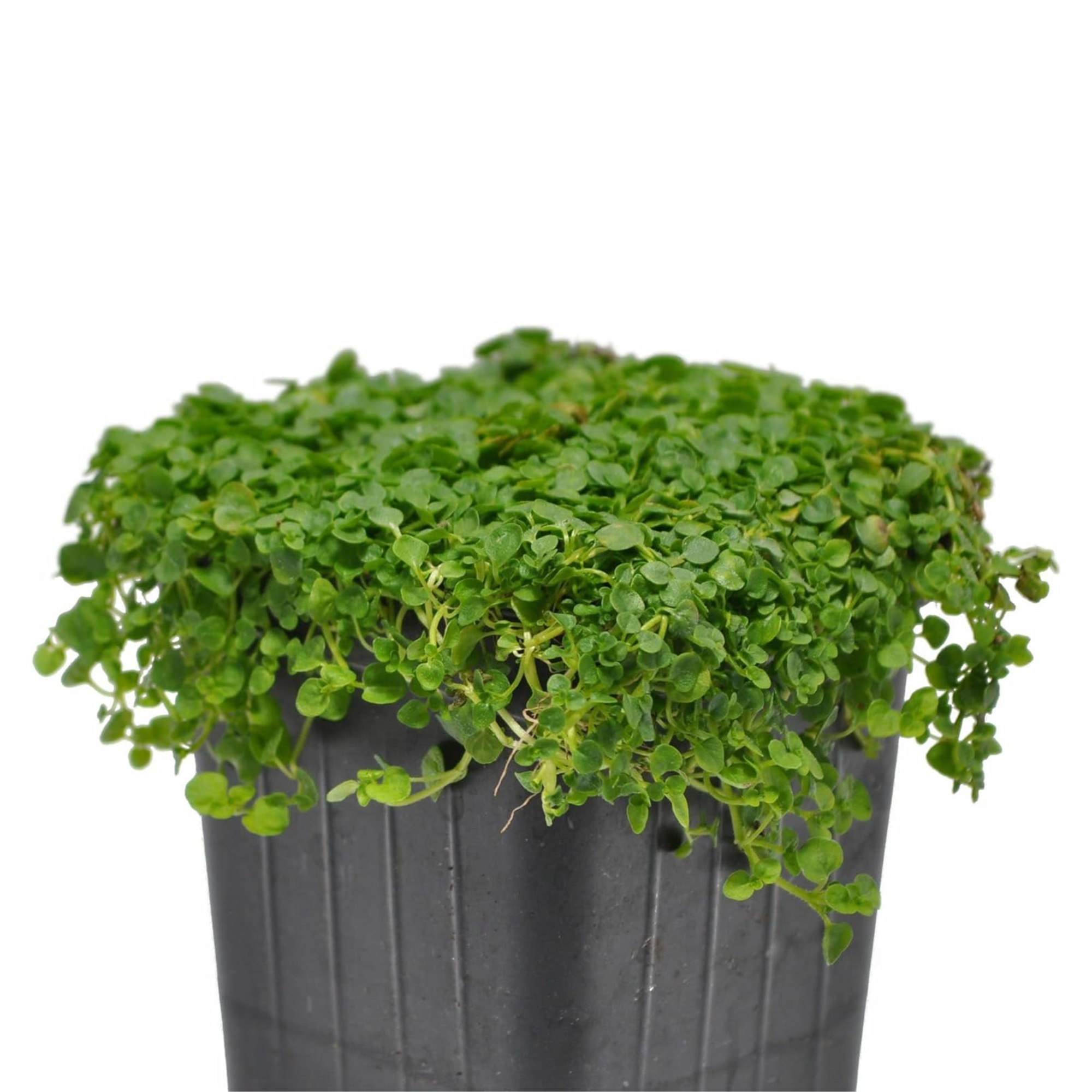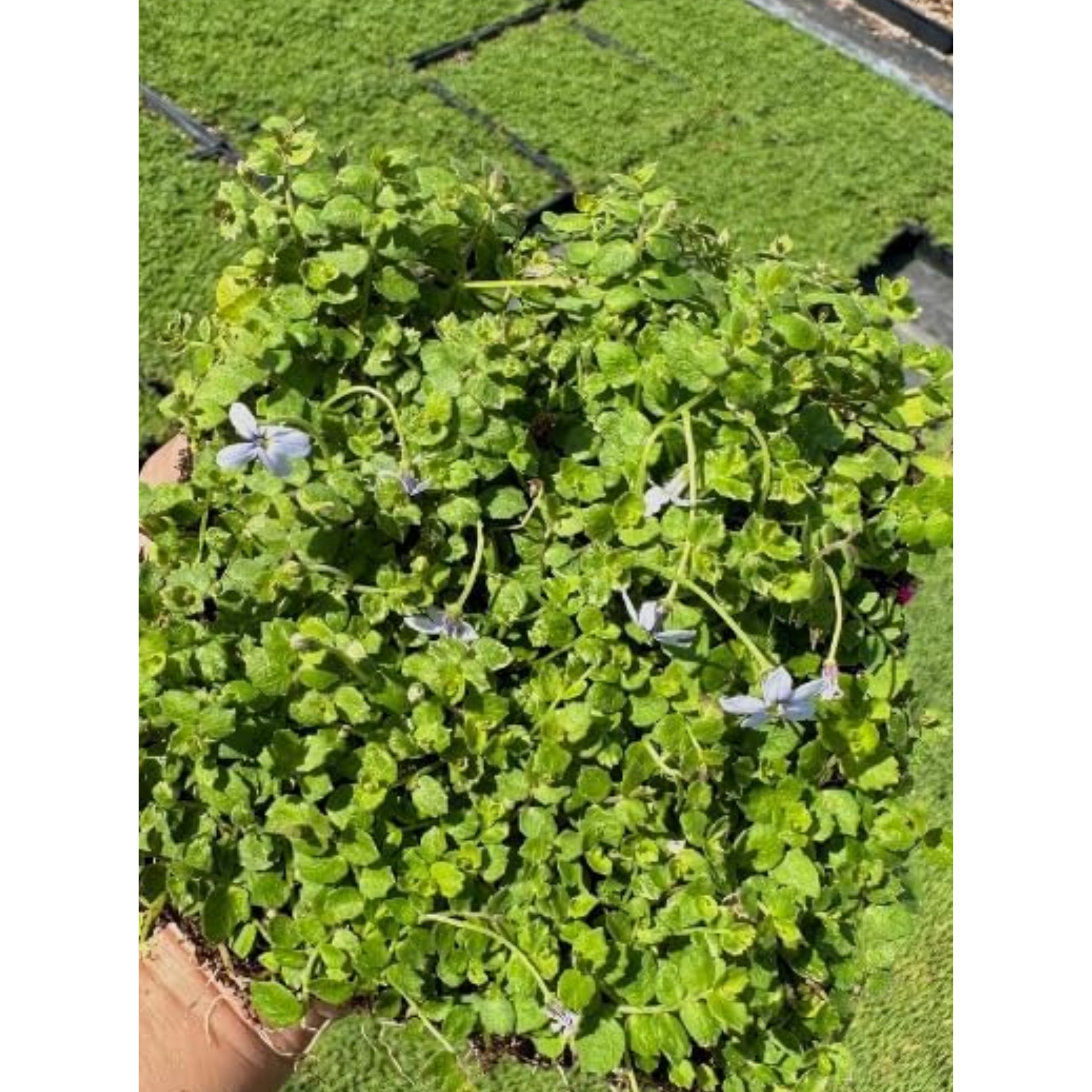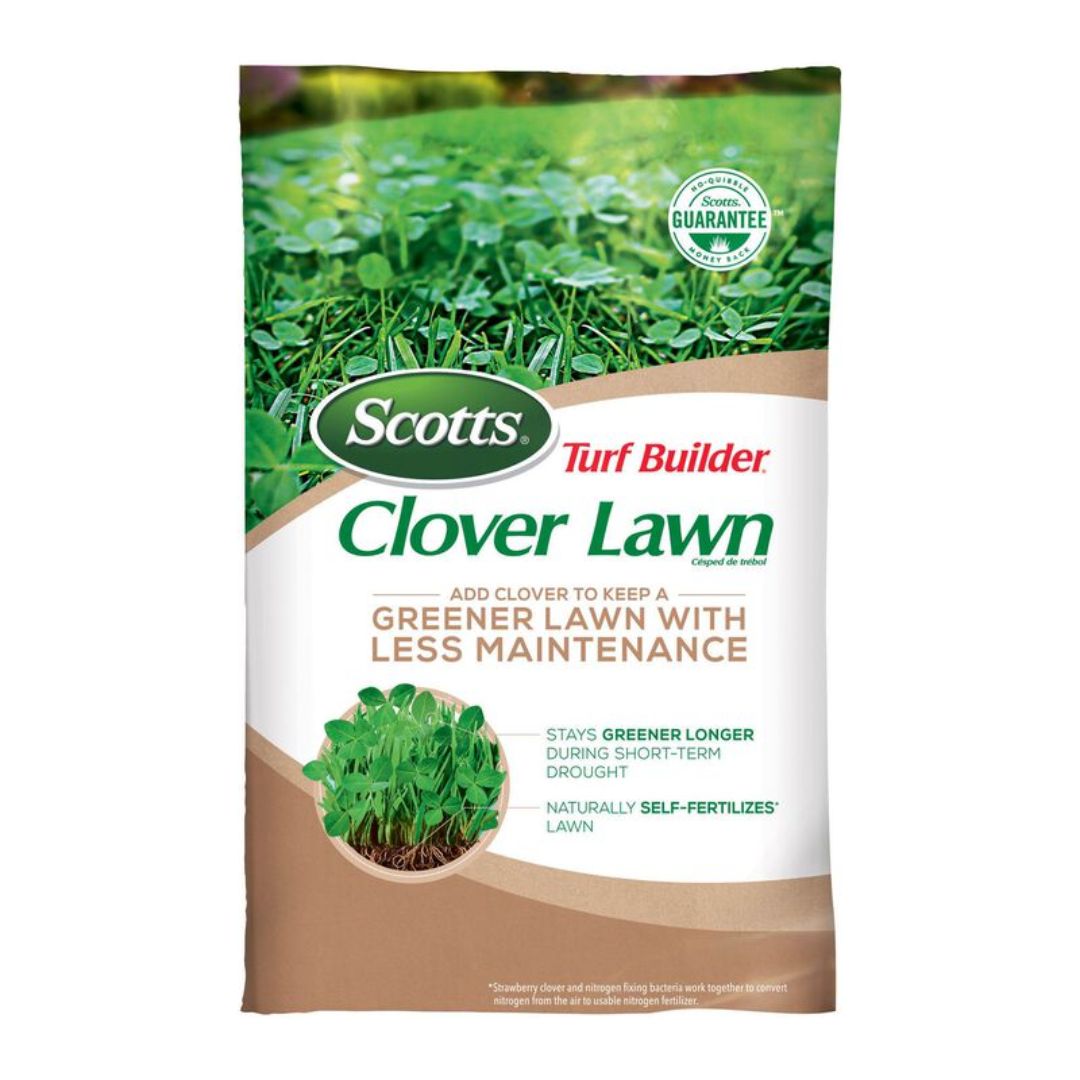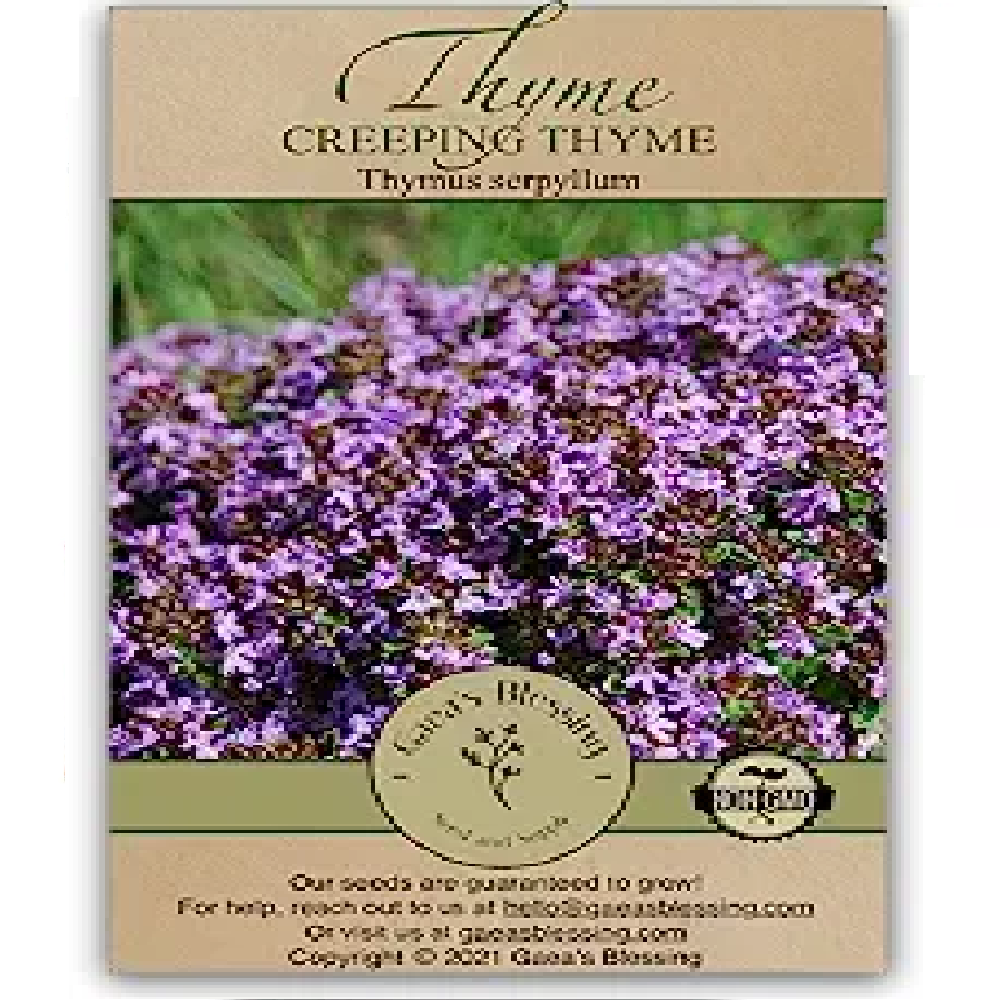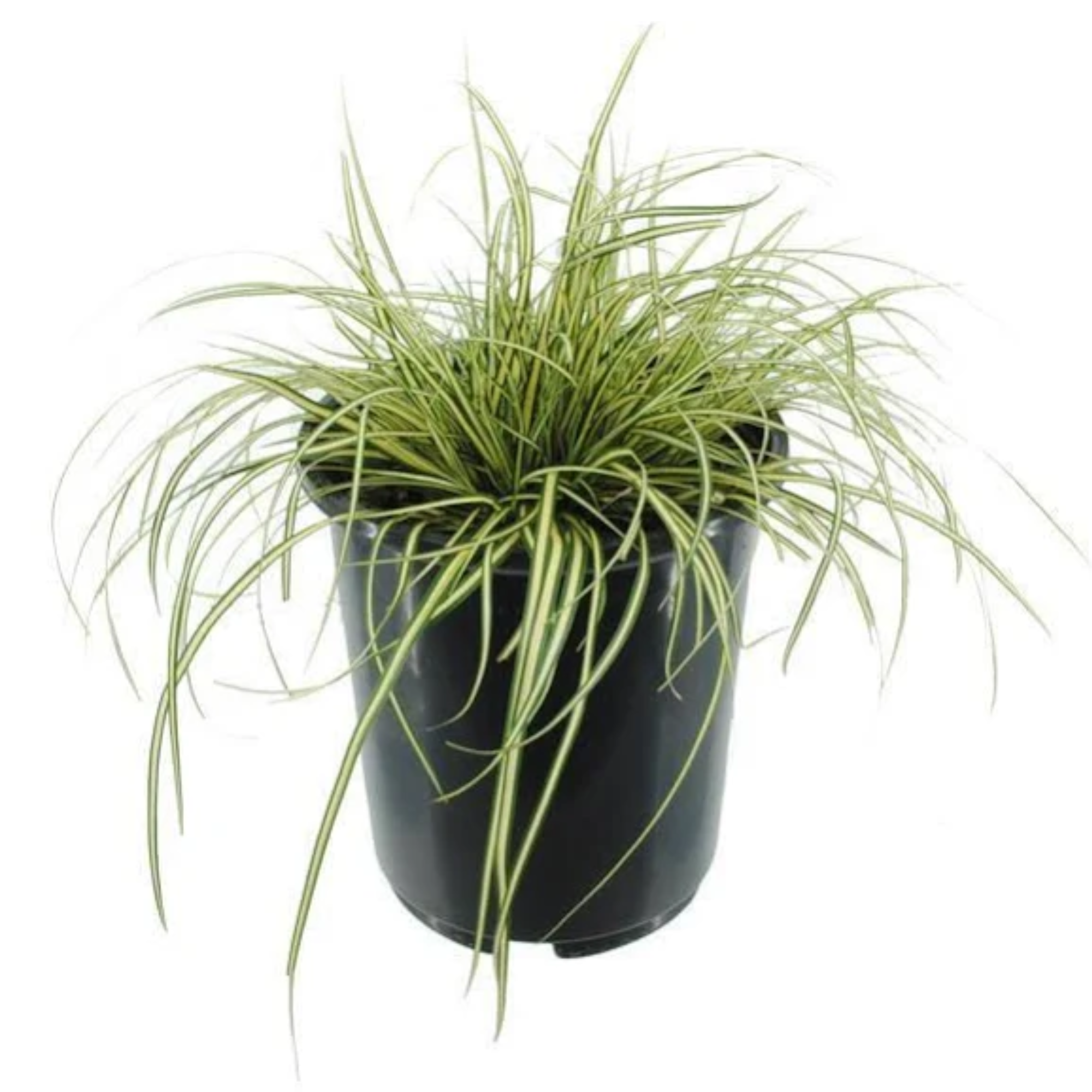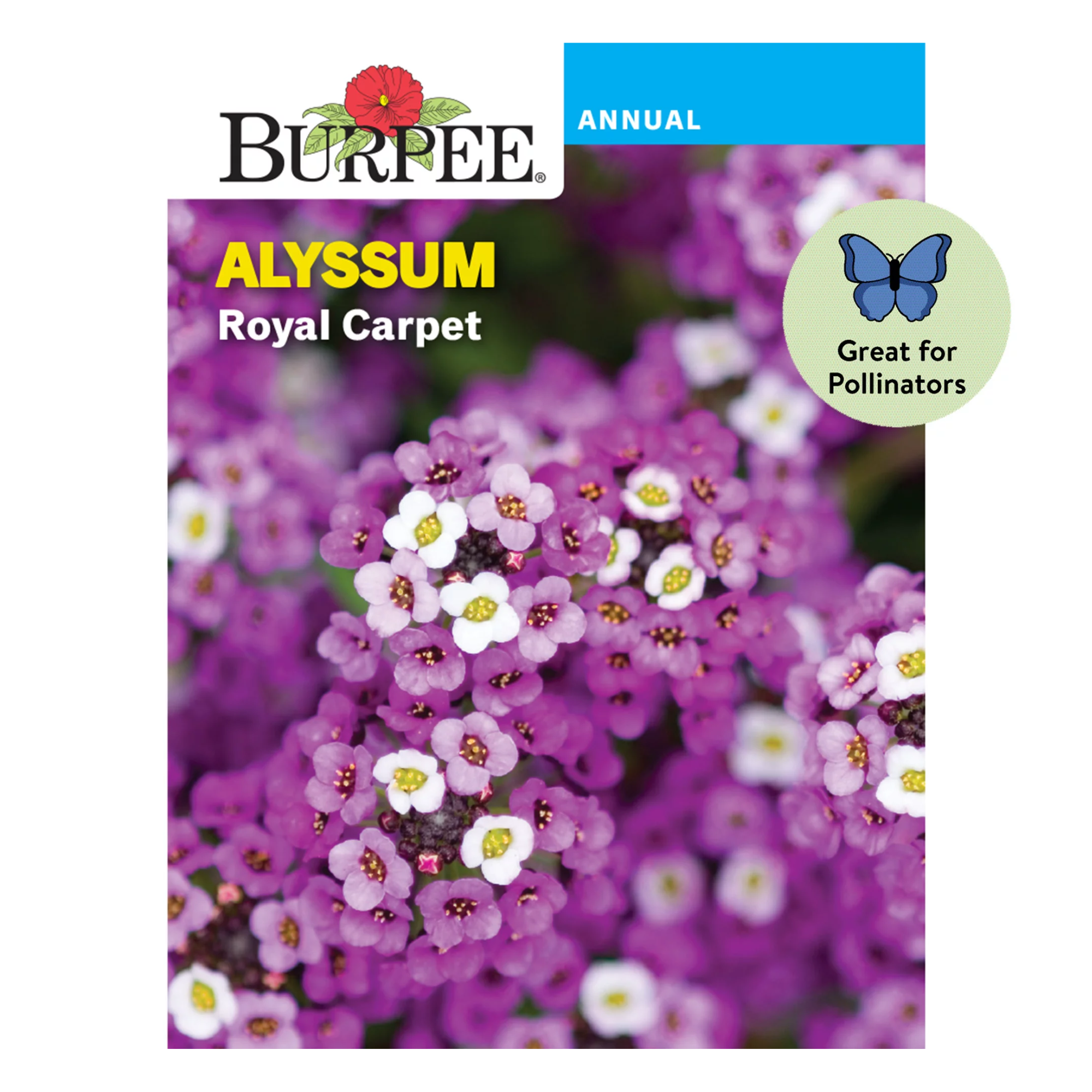17 Grass Alternatives to Traditional Lawn That Are So Much Easier to Maintain
Common lawn grasses require a lot water and a lot of TLC — these alternatives will make things a whole lot simpler (and they look better too, in our opinion)


Kentucky blue grass, fine fescue, Bermuda grass.. these are just a handful of the common grasses you'll find making up the majority of lawns across the country. However, a one-size-fits-all approach to lawns doesn't work when it comes to having a yard that not only is easy to look after, but also benefits the environment surrounding you. Fortunately, there are some less-standard grass alternatives out there you can choose, instead.
Generally, these are more drought tolerant lawn grasses than those named above, meaning less watering, and they often need less mowing, too. Traditional lawns may be green, but they also don't offer much in terms of benefits for local wildlife, either. "From an environmental standpoint, a better option for a lawn space than grass is something that most closely resembles the native or naturally occurring plantings of your area," Katherine Aul Cervoni from landscape firm Staghorn Living says.
Of course, each of these grasses is different, and each has its own requirements, too, but if you're looking for something different to classic lawn grass, here's what landscape designers and lawn experts like to use right now.
1. Creeping Red Fescue
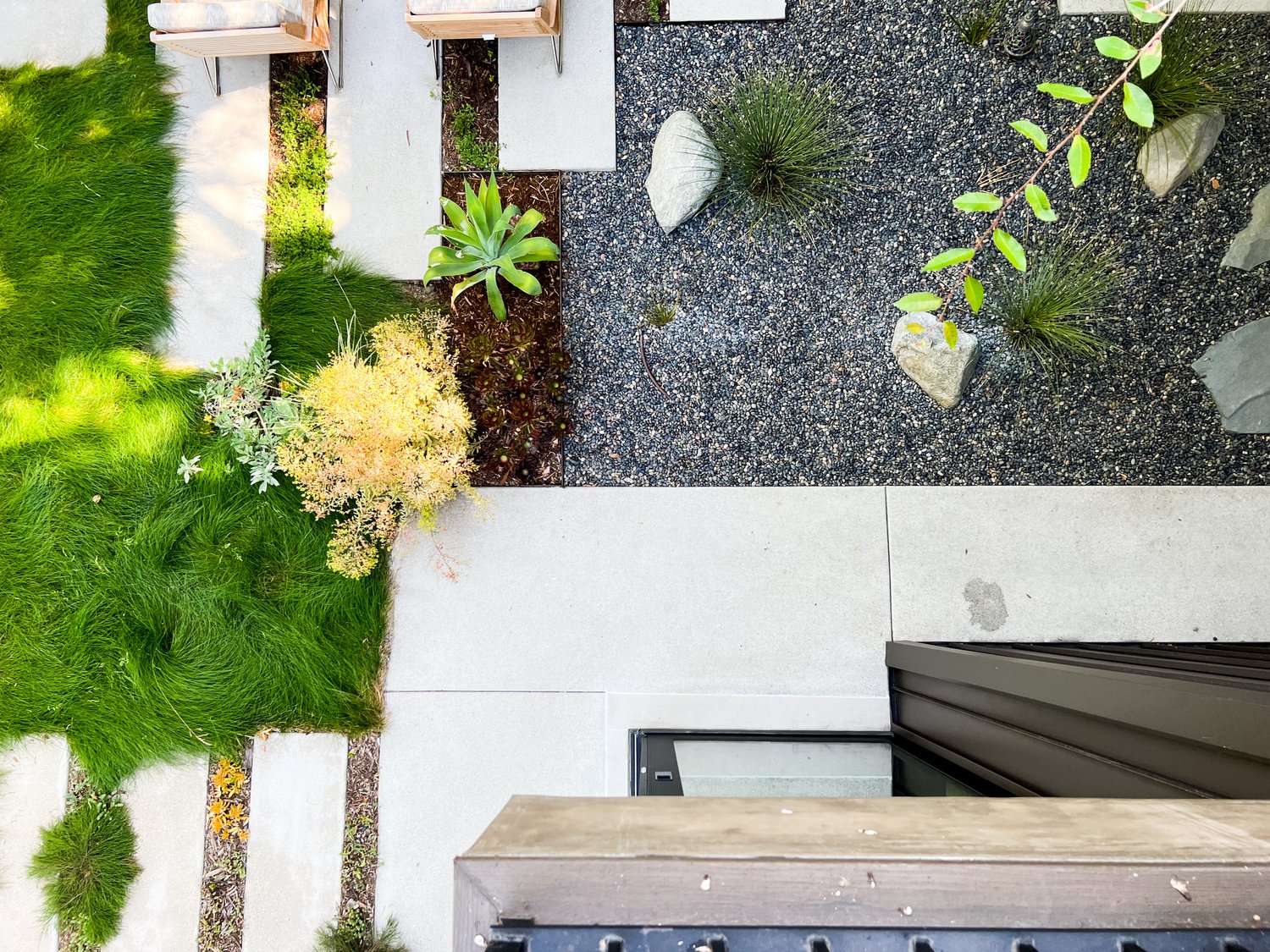
Landscape designer Jessica Viola used creeping red fescue in this backyard for a modern look that's also super easy to maintain. "Festuca rubra requires little maintenance, attracts birds and inherently denotes a softness," Jessica says.
It's a groundcover that grows best in shade, and doesn't need much mowing or much in the way of watering, either. When it gets a little long, it "lies down" more than classic grasses, but some (us included) like the look.
2. Bent Grass

"Bent grass is great choice for a lawn alternative," says Naha Sohbati, landscape designer from California-based firm Topophyla. "Agrostis pallens require less water and less mowing, and it can be left un-mowed for a natural look. It’s dog-friendly, and can tolerate moderate traffic," Naha adds.
It's native to the North of America, and when left longer, it creates an undulating look that brings an interesting texture to your natural front yard.
The Livingetc newsletters are your inside source for what’s shaping interiors now - and what’s next. Discover trend forecasts, smart style ideas, and curated shopping inspiration that brings design to life. Subscribe today and stay ahead of the curve.
3. Kurapia
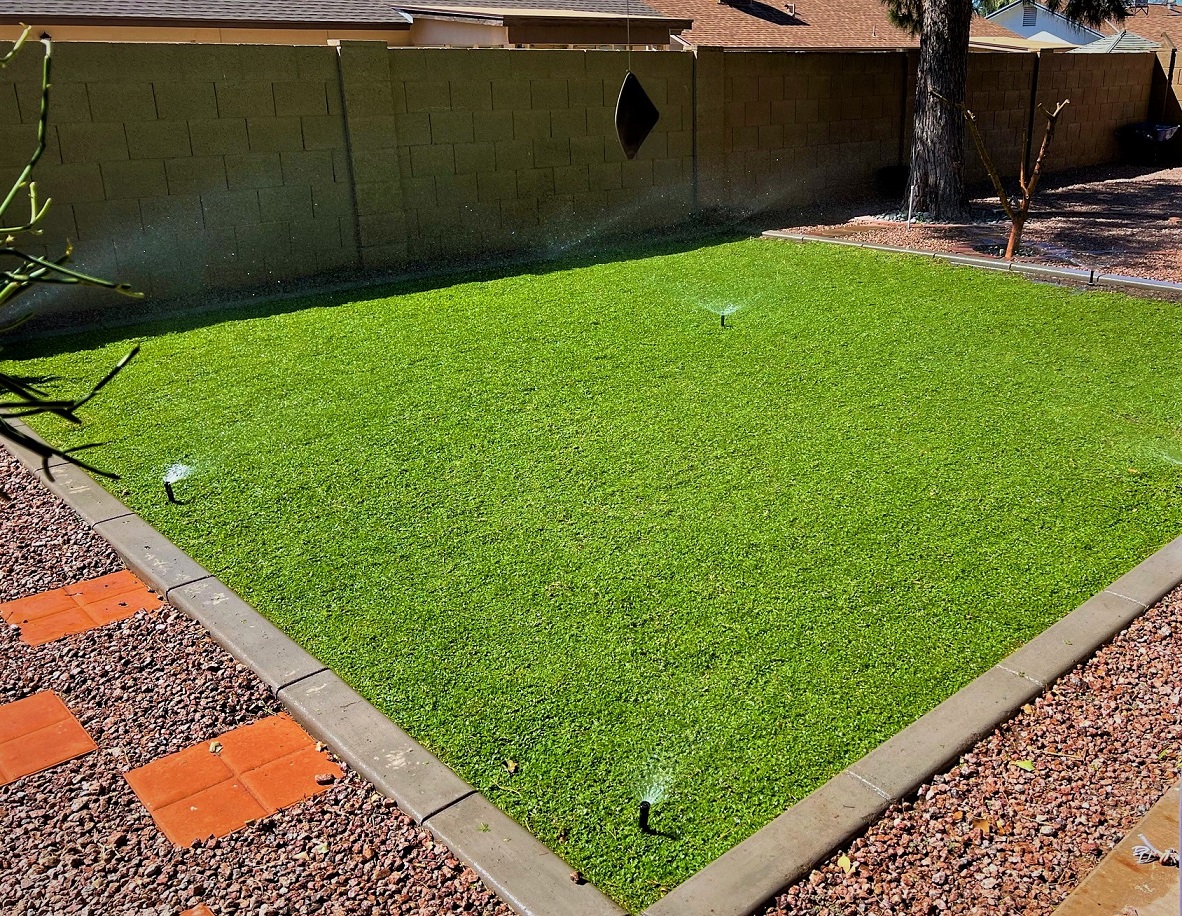
Kurapia, also known as Phyla Nodiflora L. is a grass alternative that's burgeoning in popularity in recent times. "Kurapia is another excellent lawn replacement option," Naha tells us. "It's a good soil stabilizer, tolerant of light foot traffic, and requires significantly less water than traditional lawns."
"Just keep in mind that it blooms and attracts bees, so it might not be the best choice for those with bee allergies," Naha adds, but that's a plus point if you're looking to create a wildlife garden.
4. Moss

Typically moss is something we try to rid our lawns of, but if you don't fancy polluting your backyard with harsh chemicals in a battle to banish it, you could embrace moss as a groundcover instead.
If you're looking to keep your lawn green but add a bit of extra cushioning, a moss lawn is one of the best alternatives to grass. "They form a dense, velvety carpet that is both visually appealing and environmentally friendly," says Tony O'Neill, gardening expert and owner of Simplify Gardening. "Moss requires no mowing, fertilizing, or watering beyond natural rainfall, making it a low-maintenance and sustainable option."
When it comes to the ideal conditions for a moss lawn, Tony notes that they're best for a shady garden where they create a whimsical aesthetic. "Moss can be established by transplanting patches into the desired area or by making a moss slurry (blended moss with buttermilk) and applying it to the lawn," he says. "Water it regularly until it's well established, and then sit back and watch it thrive in the shade."
5. Meadow flowers

Wondering what's replacing lawn? Meadow flowers are a romantic choice if you want to bring a burst of color to your outdoor space. "Meadow lawns are a fantastic alternative to traditional grass lawns, offering a mix of grasses and wildflowers that create a natural, beautiful landscape," says Tony. "They require less mowing and water, supporting local biodiversity and providing a habitat for pollinators."
If you're stuck on what to plant, Katherine Aul Cervoni of landscape design company, Staghord NYC says you should let your naturally-occurring flora rule. "In essence, it's whatever plantings naturally grow in your lawn once you let it grow wild and stop mowing it," she says. "This will evolve over time and can also be amended with seed to include more wildflowers to your liking."
Katherine is quick to note that the more aesthetic meadow lawns you see on the likes of Instagram are actually meticulously edited and maintained to have a careful balance of certain types of flowers and grasses. "So while these can be a bit high-maintenance if you are strict about their appearance, this is still more environmentally friendly than mowing, fertilizing and watering a typical turf lawn."
6. Corsican mint

For a fragrant grass alternative that's easy to care for, Corsican mint is another great choice for a lawn that offers a beautiful accompaniment to your surrounding garden borders. The green foliage looks a lot like grass until examined closely, and tiny purple flowers will also bloom during the summer.
"Corsican Mint is a charming, low-growing herb that forms a dense, fragrant mat," Tony explains. "It’s perfect for shady areas and can be used between pavers or as a ground cover in moist, well-drained soils. Its tiny, bright green leaves release a pleasant minty aroma when walked on, making it a delightful addition to any garden."
7. Creeping Jenny

For a truly unique look, creeping Jenny can make a wonderful lawn. One of the best ground cover plants to prevent weeds, the dense foliage of this hardy perennial offers plenty of cushioning underfoot and doesn't allow unwanted weeds to poke through.
"Creeping Jenny is a vigorous ground cover known for its bright green, almost golden foliage," says Tony. "It's ideal for areas where you want to add a pop of color and is especially effective in damp, shady spots."
8. Blue Star Creeper

If you want a more dramatic departure to green turf, why not go for a blue lawn instead? As the name suggests, Blue Star Creeper brings a sea of tiny blue flowers to your garden that looks seriously captivating, and it's suitable as a walkable groundcover, too.
"Blue Star Creeper is an excellent grass alternative due to its low-growing, dense mat of tiny, star-shaped flowers," Tony says. "It’s perfect for walkways and between stepping stones, providing a soft, lush look that requires minimal maintenance. It thrives in full sun to partial shade and can handle moderate foot traffic."
9. Clover
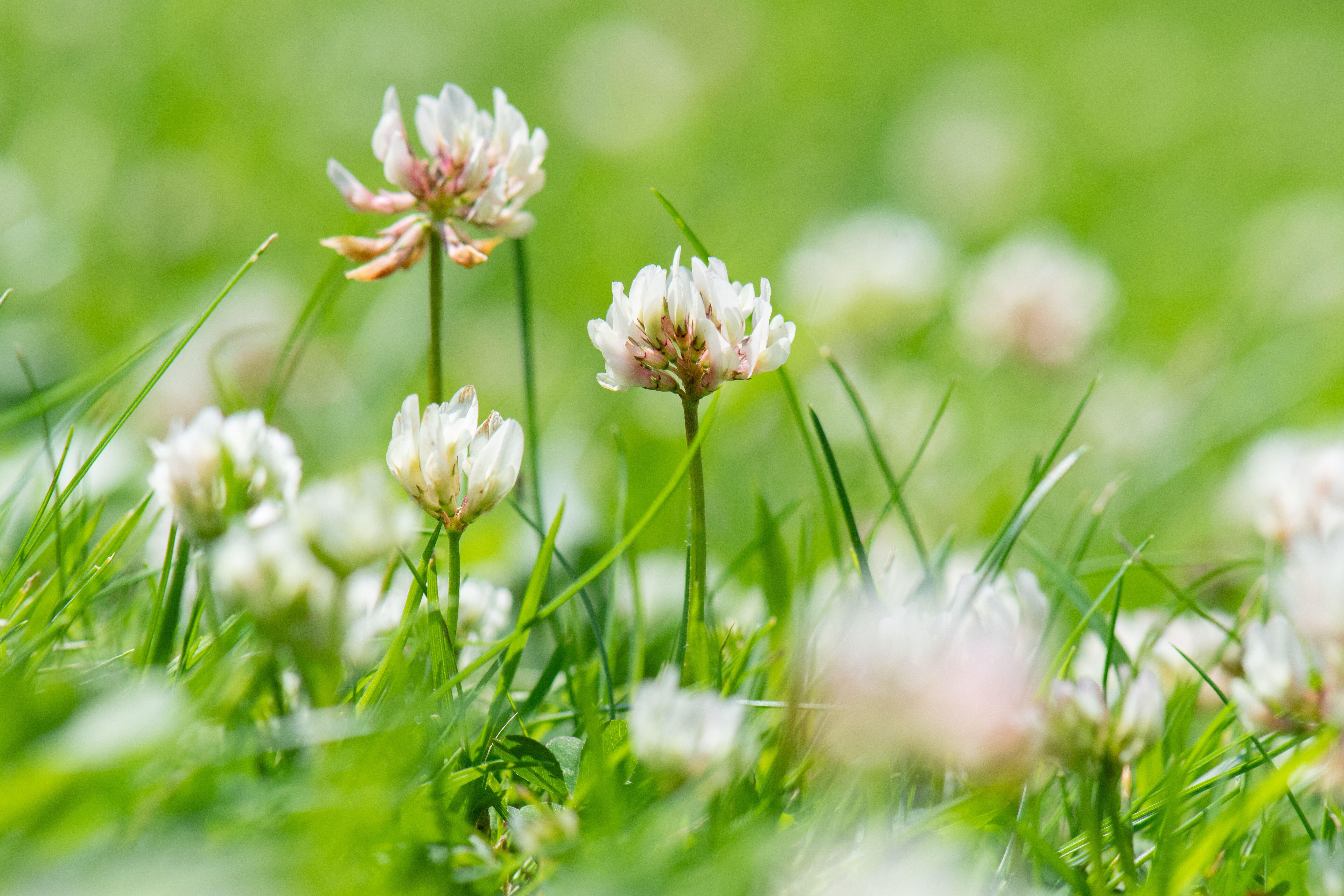
Last summer clover lawns took off as a gardening trend, and if you still want a luscious green feel on your lawn, they really are one of the best alternatives to grass. Besides being a far cheap and more low-maintenance lawn option, they're also far prettier too.
"Clover plants make good grass alternatives due to their hardy nature, requiring less mowing and water than typical grass species," explains Jeremy Yamaguchi, lawn expert and owner of Lawn Love. "Clover lawns create thick, lush carpets of green foliage and they also produce white flowers and attract beneficial insects such as bees and butterflies."
From a practical point of view, these types of lawns can also provide natural nitrogen fixation for your soil, helping other plants in your garden to grow healthily. "To plant clover, sow seeds in spring or fall directly into the soil," adds Tony. "Clover thrives with regular watering until it's well-established, after which it can tolerate periods of drought."
"Clover is also low-maintenance and requires less frequent mowing as it grows low and spreads horizontally," says Matthew Koch, plant expert and Director of Biotechnology, Genetics, and Seed at Scotts. "Additionally, clover has the ability to fix nitrogen from the atmosphere which enriches the soil and promotes healthier plant growth."
If you’re looking to add clover to your lawn, Scotts Turf Builder Clover Lawn is a low-maintenance grass alternative that doesn't require a lot of water and can withstand short-term drought conditions.
10. Creeping thyme

If you want to introduce some color to your lawn, as well as a sweet-smelling scent to greet you every time you walk across your backyard, a red creeping thyme lawn makes a great alternative to grass. While not a close imitation by any stretch, this fragrant perennial herb will tolerate a range of conditions and create a carpet of purple petals on your lawn.
It might not be as soft as grass, but thyme makes a great walkable groundcover for pathways or high-traffic areas of your garden since you don't have to worry about it wearing down like you do with grass. "Plant thyme by placing small plants or cuttings into well-drained soil in early spring," Tony suggests. "It prefers full sun but can tolerate partial shade, and once established, it's drought-tolerant and only needs occasional watering during dry spells."
11. Carex (Sedges)
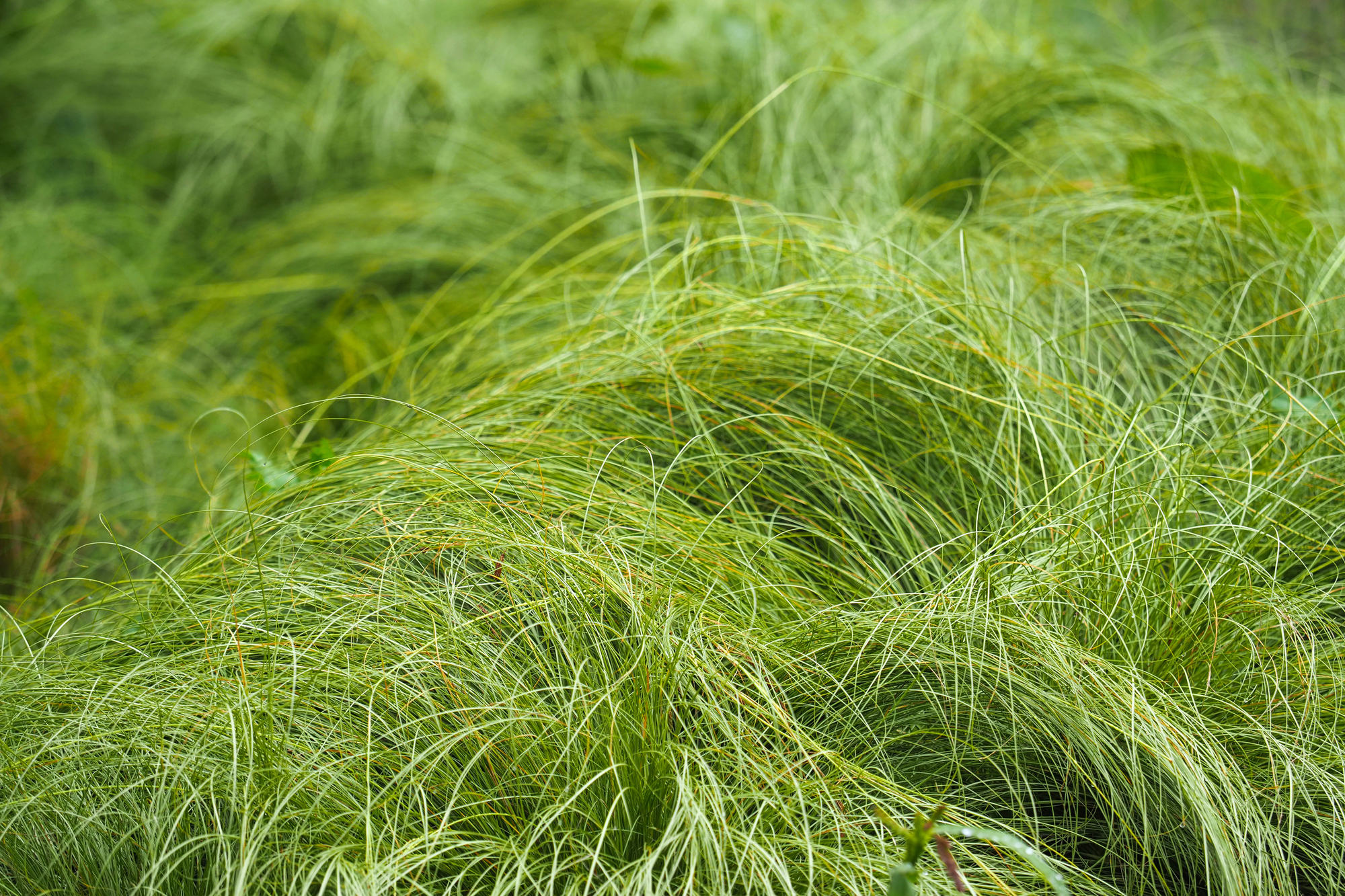
Strictly speaking, carex is still technically a type of grass, but its taller, fluffier tufts can turn your lawn into a sea of soft green foliage. 'With a sedge lawn, it looks basically identical to grass but longer so it has more of a grown-out-lawn look to it,' says Katherine. It's also a far better option for wildlife gardening since they need little water and no fertilizer when planted in their native regions."
"Carex, also known as sedges, are elegant bunching plants with blade-like foliage," Jeremy explains. "They’re quickly gaining popularity as an easy-care turfgrass alternative, and there's a tremendous variety (over 2,000 species globally), so you can pick the one that best fits your yard’s needs."
For a sedge that will fill out your entire lawn, Jeremy suggests the shade-loving Pennsylvania sedge. "Thriving in the Eastern US, it can be kept as an unmown lawn of six to seven inches or mowed at three to four inches," he says. "If you live on the West Coast and have sandy soil, evergreen sand dune sedge is an excellent option while Texas sedge is a popular choice for Texan homeowners with shady lawns and dry to moist soil."
12. Dichondra Repens

If you're looking for a more low-growing groundcover that makes a lusciously green landscaping idea for your lawn, Dichondra Repens — commonly known as kidney weed due to its kidney-shaped leaves - is a great choice. The warm-season perennial grows best in small gardens as opposed to sprawling lawns, but it has the advantage of being a no-mow lawn substitute.
"Aesthetically, it has a delicate, cascading nature that softens hardscapes, and practically, it's a great solution for those tricky shady spots where grass struggles," says Tony. "You can plant Dichondra from seeds or plugs in well-draining soil which should be kept moist until established. Regular watering and a feed in the spring will keep it looking lush and green."
13. Sedum

For another low-maintenance garden idea, sedum is an excellent alternative to lawn grass. Also known as stonecrop, this mat-forming groundcover is often used in between pathway paving stones or among rockeries thanks to its hardy nature. "If your outdoor space has tons of sun, then a mixture of low-growing sedums – just as those used in green roofs – could be a greener option than traditional lawn grass," Katherine notes. "This is because they'll survive off whatever rainwater they get and need little else to thrive."
According to Tony, sedum is an expansive family of succulent plants known for their water-storing leaves and star-shaped flowers. "Varieties like Sedum album or Sedum Sarmentosum are ideal as ground covers," he says. "Sedum provides a unique aesthetic with its succulent leaves and bursts of colorful flowers, and practically, it's extremely hardy, drought-resistant, and can tolerate foot traffic." To plant it, he suggests placing cuttings or small plants into well-drained soil during spring or autumn.
14. A tapestry lawn

If you want your lawn to offer a burst of bright colors, a tapestry lawn might be for you. They're a type of ground-cover foliage made up of various low-growing perennials that create a patchwork-like collage in your backyard, making them great for adding variety and diversity to your outdoor space.
While a little more unusual, tapestry lawns are growing in popularity. "Not only are they more colorful, more visually intriguing, and more eco-friendly than grass, but they're also more low-maintenance too," notes Jeremy. 'They don’t require frequent mowing or general maintenance, and they typically require much less watering.'
You can choose any time of low-growing plant you like to make up a totally unique tapestry lawn, but Jeremy suggests choosing ones that are native to your area and non-invasive. "You also want your selection of plants to all have similar water, light, and humidity requirements," he adds. "The only major downside to this type of lawn is that it is not well built for much foot traffic."
15. Fern
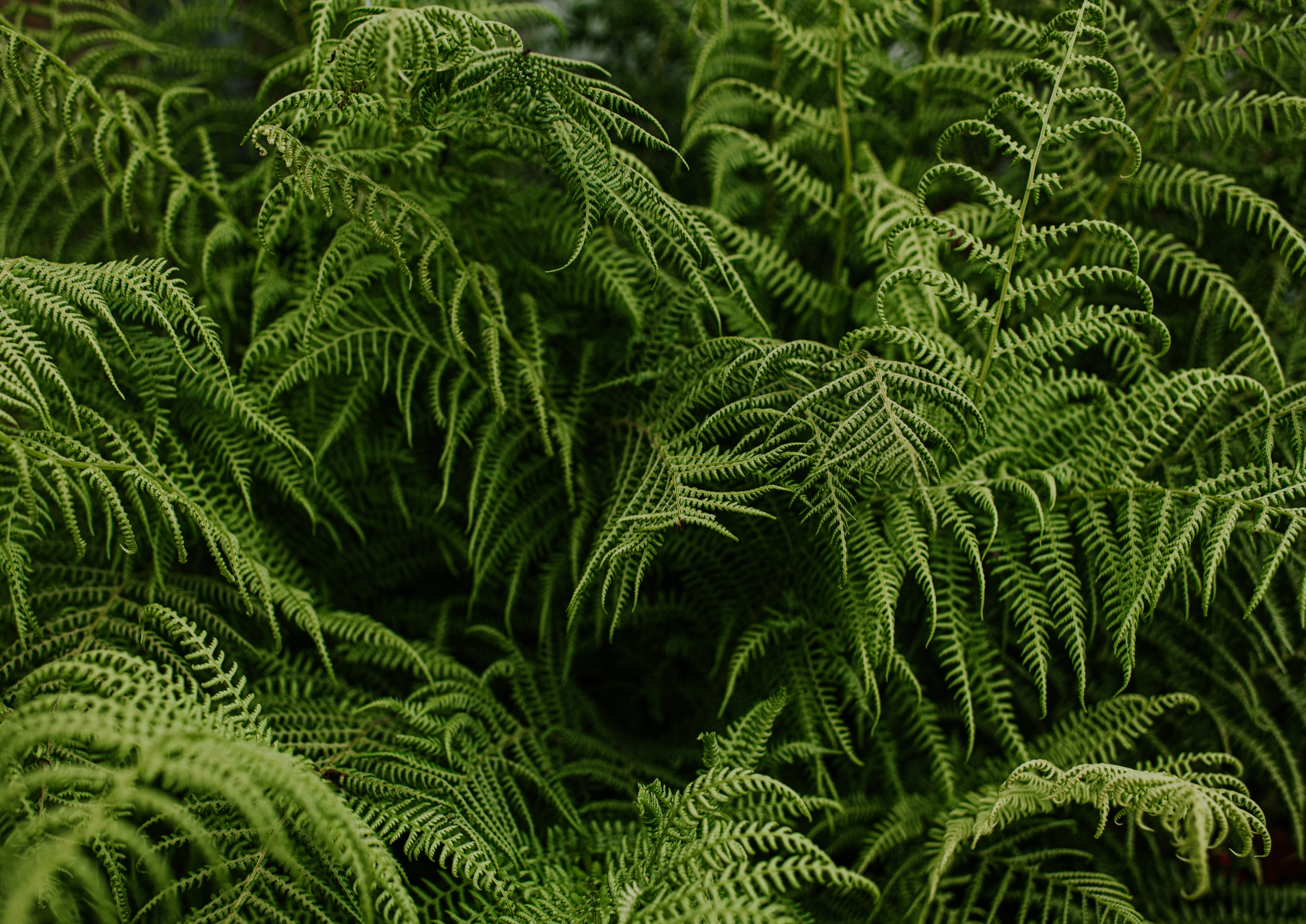
Ideal for all your shady garden ideas, fern is a great grass alternative according to Senior Horticulturist Amy Enfield from ScottsMiracle-Gro. Fern also makes for an ideal low maintenance groundcover for shade.
Amy tells us: "The classic plant has diverse foliage sizes, textures and shapes. They can range from delicate maidenhair ferns, colorful Japanese painted ferns, to robust ostrich ferns, all of which thrive in moist, shaded environments."
The expert says fern is a excellent choice for naturalizing shaded areas as it is quite easy to maintain.
16. Lilyturf
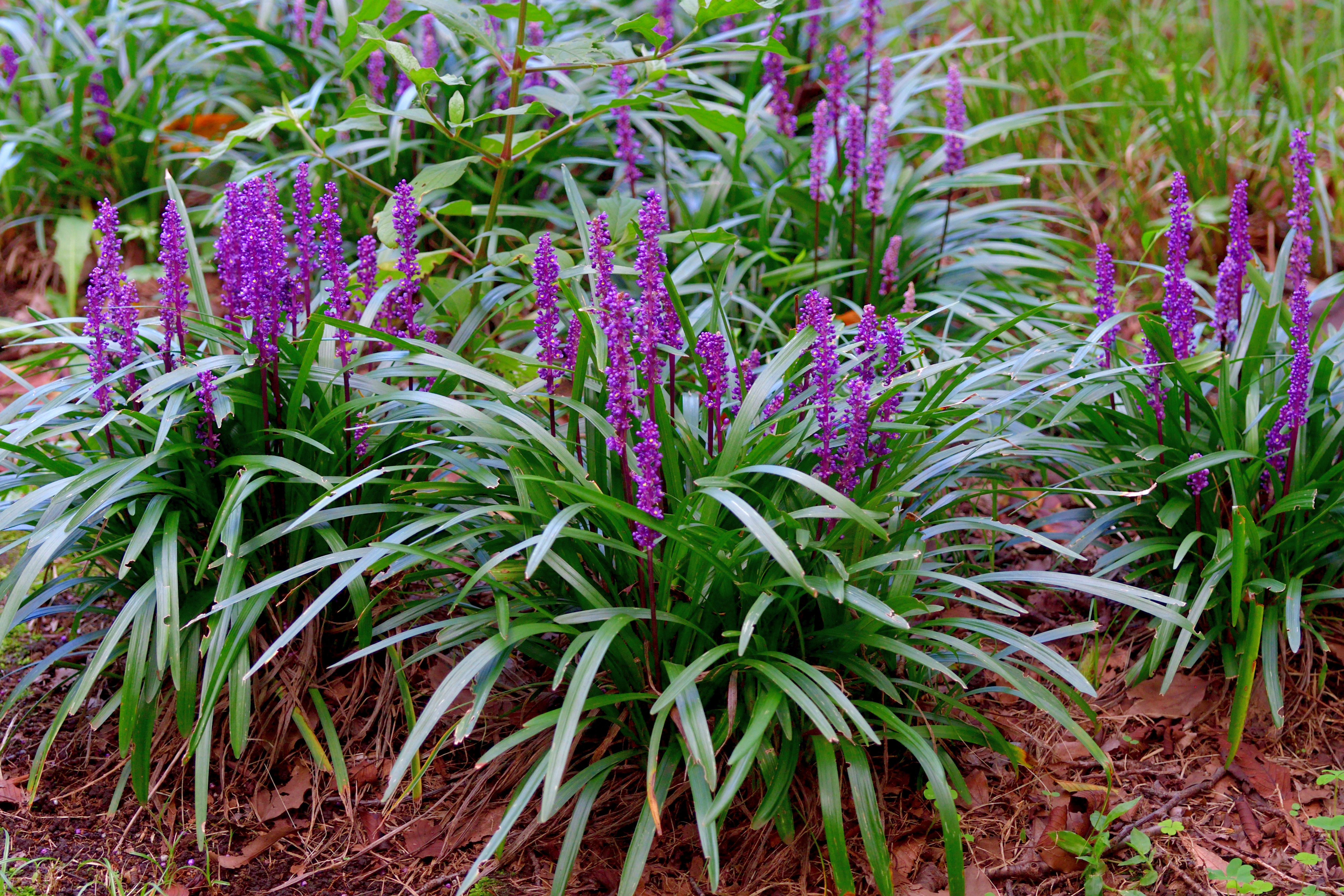
As well as being one of the best perennial shade plants — lilyturf makes for the perfect leafy green alternative.
"Also called Liriope, is a good option for people who like the look of grass but don’t want the maintenance of grass," explains Amy. "It stays green year-round in most climates and produces spikes of tiny blue or white flowers".
To get the most of it, you will need to trim or mow your lilyturf once in the early spring before its new growth season begins.
17. Lungwort
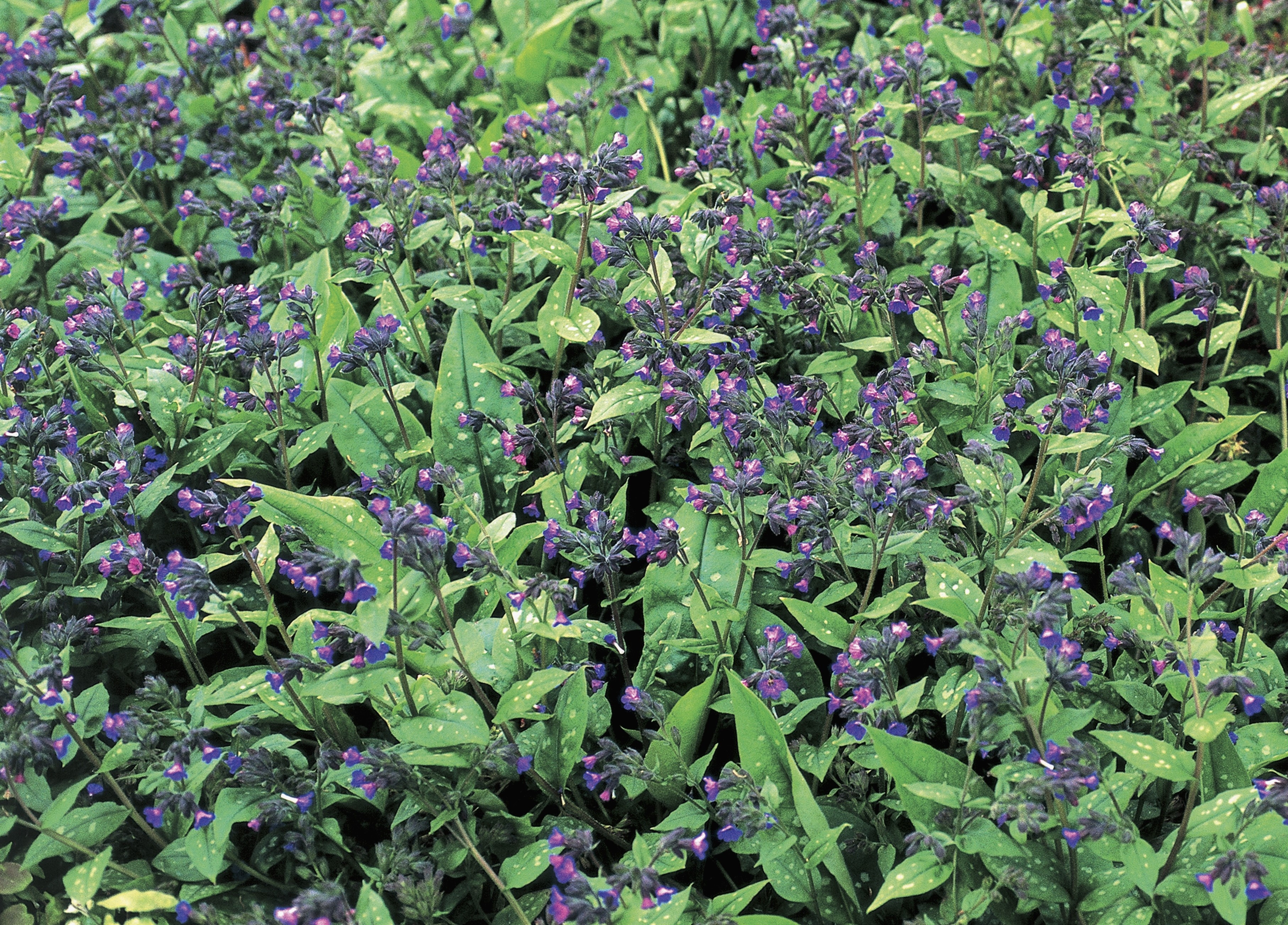
If you want to welcome beneficial garden insects into your yard, then lungwort ground cover is your best bet. Carrying green leaves and purple blooms, this shrub is an ideal grass alternative.
"Lungwort has silver spotted, heart-shaped leaves and produces beautiful flowers in spring in shades of white, purples, blues, and pinks that can form on the same plant," says Amy. "The flowers emerge first followed by the stunning leaves."
Fairly low maintenance once established, you may need to be water this plant once a week during seasons of drought.
FAQs
What is better for the environment than grass?

Almost all grass alternatives are much better for the environment than your standard turf. "Ground covers like clover, moss, and native wildflowers are often better for the environment than traditional grass lawns," Tony explains. "These alternatives require less water, no fertilizers or pesticides, and support local wildlife and biodiversity, helping to reduce the carbon footprint associated with lawn maintenance." Katherine also notes that any plant native to your environment is generally a better alternative to grass.
WHY YOU SHOULD OPT FOR GRASS ALTERNATIVES
Each grass alternative has its own unique benefits and Matthew tells us: "When environmental and geographical challenges like shade limit options for your lawn, moss, clover, and other plants can be great alternatives. These alternative ground covers also offer many surprising benefits like less maintenance and enhanced biodiversity which provides habitats and food sources for pollinators, birds, and other wildlife."
Amy says these alternatives also "allow for visual appeal by adding diverse colors, textures, and shapes, creating a more dynamic and attractive landscape compared to traditional grass lawns." She continues: "For the most part, they require less maintenance once established, reducing the need for frequent mowing, fertilizing, and watering."
IS LAWN BEING REPLACED?
Landscaping ideas just got a little more exciting, with so many alternatives to choose from — you can elevate your backyard the way that you like. So, what's really replacing lawn?There are many grass alternative to choose from and for many, given the climate they are living, opting for something other than grass is just a better fit.
Landscape designer Christian Douglas tells us drought tolerant lawn grass also makes a great alternative. "Lower-water lawn species are also available. Sedge, Kurapia and Dymondia are varieties that do well on the West Coast. Each has their own personality and set of needs, but ultimately require considerably less inputs and aftercare than regular lawn grass."
However you may find with some lawn alternatives, they may not grow as quickly as you might want them to. For this, Christian says: "With all options, just focus on the long game, rather than instant gratification and the returns will come ten-fold".
What is the best low-maintenance ground cover?
If the constant upkeep of your lawn is what's turning you away, look out for a low-maintenance ground cover instead. "Creeping thyme is one of the best low-maintenance ground covers," says Tony. "It requires minimal watering, no mowing, and it’s drought-tolerant once established. Additionally, it produces beautiful flowers that attract pollinators and release a pleasant aroma."
What ground cover looks most like grass?
If you still want your lawn to look like grass, Tony recommends choosing an alternative like Dichondra Repens. "This ground cover closely resembles grass with its small, kidney-shaped leaves,' he says. 'It forms a lush, green carpet that can be used as a lawn substitute, requiring less water and maintenance than traditional turfgrass."
Generally, though, any low-growing groundcover with green foliage will give the appearance of grass at a distance. "Moss tends to be very dense and low-growing, so it gives a similar look to a traditional lawn in that it's a flat expanse of green," suggests Katherine.

Lilith Hudson is a freelance writer and regular contributor to Livingetc. She holds an MA in Magazine Journalism from City, University of London, and has written for various titles including Homes & Gardens, House Beautiful, Advnture, the Saturday Times Magazine, Evening Standard, DJ Mag, Metro, and The Simple Things Magazine.
Prior to going freelance, Lilith was the News and Trends Editor at Livingetc. It was a role that helped her develop a keen eye for spotting all the latest micro-trends, interior hacks, and viral decor must-haves you need in your home. With a constant ear to the ground on the design scene, she's ahead of the curve when it comes to the latest color that's sweeping interiors or the hot new style to decorate our homes.
- Luke Arthur WellsContributing Writer
- Faiza SaqibRenovation Editor
